Introduction to OpenAI
Introduction to AI
The Role of Pre Training and Fine Tuning in LLMs
In this article, we dive into the two key stages that power modern large language models (LLMs) like GPT-4 and other transformer-based architectures. By understanding the distinction between pre-training and fine-tuning, you’ll see how these models learn from massive datasets and then specialize for specific tasks, from text generation and translation to question answering and sentiment analysis.
We’ll cover:
- Why pre-training is essential
- Pre-training objectives and methods
- What fine-tuning entails
- A step-by-step workflow
- Real-world use cases
- Key success factors and challenges
Importance of Pre-Training
Pre-training lays the foundation for an LLM’s broad language understanding by leveraging large, unlabeled text corpora. This unsupervised phase enables models to learn:
- General language patterns: grammar, syntax, semantics
- Transferable knowledge: facts, relationships, real-world context
- Efficiency: reuse of pre-trained weights for multiple downstream tasks
Pre-trained models dramatically reduce the time and computational cost required for building task-specific applications, such as sentiment analysis, summarization, or machine translation.
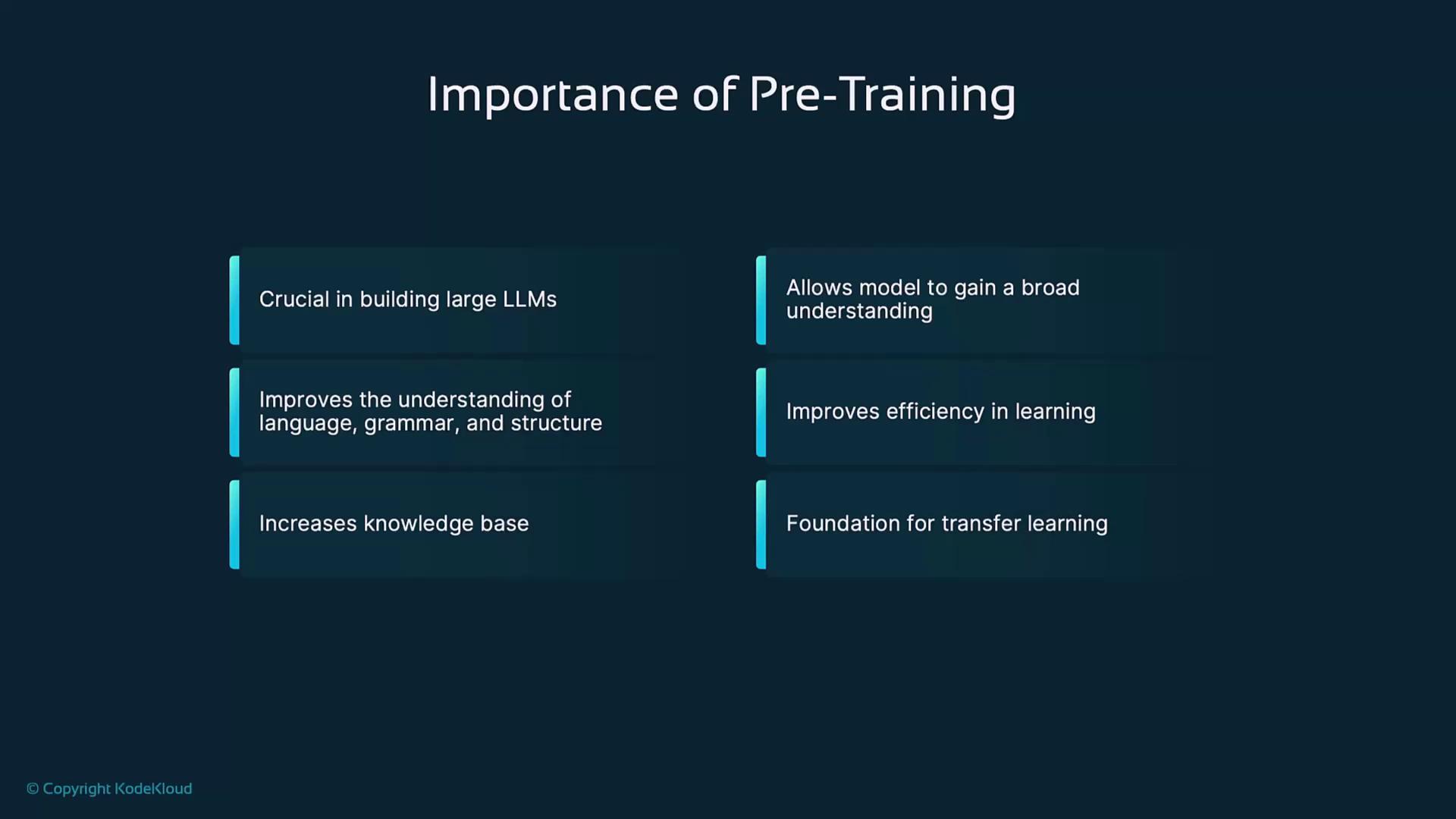
Note
Pre-trained LLMs act as versatile foundations. By adapting them to new tasks, you avoid training models from scratch and leverage existing knowledge.
Pre-Training Objectives
During pre-training, an LLM processes diverse text sources (books, articles, web pages) using unsupervised learning. The two most common objectives are:
| Objective | Description | Example |
|---|---|---|
| Autoregressive (next-word prediction) | The model predicts the next token given preceding context. | “The cat sat on the” → model predicts “mat.” |
| Masked Language Modeling | Random tokens are masked and the model infers them from context. | “The [MASK] sat on the mat” → model predicts “cat.” |
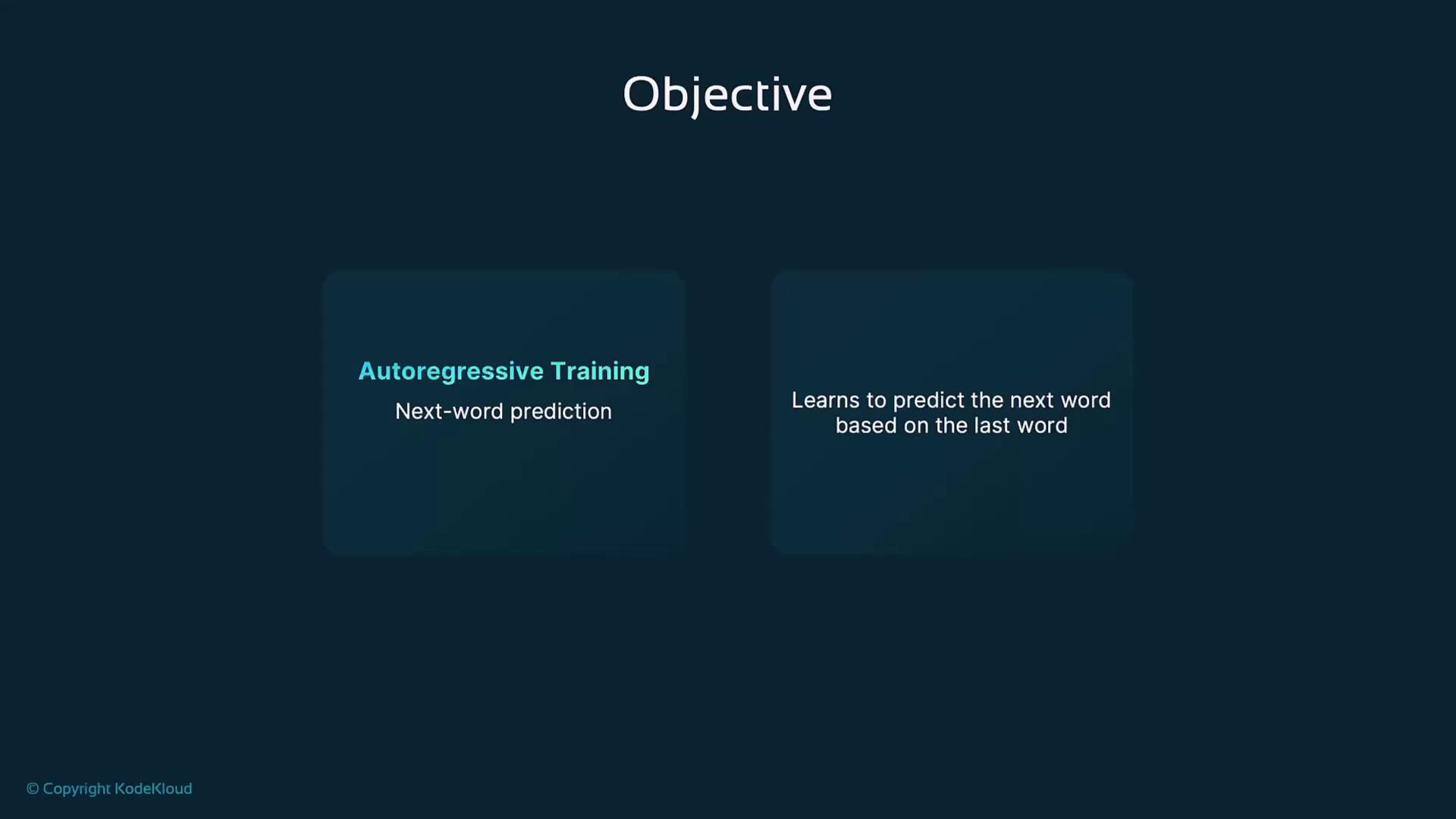
By learning both local and global dependencies, pre-trained LLMs build a rich representation of language that transfers seamlessly to many applications.
Introduction to Fine-Tuning
Fine-tuning specializes a pre-trained LLM for a downstream task by training on a smaller, labeled dataset in a supervised manner. This phase refines the model’s parameters to capture the nuances of the target task, such as translation, sentiment classification, or question answering.
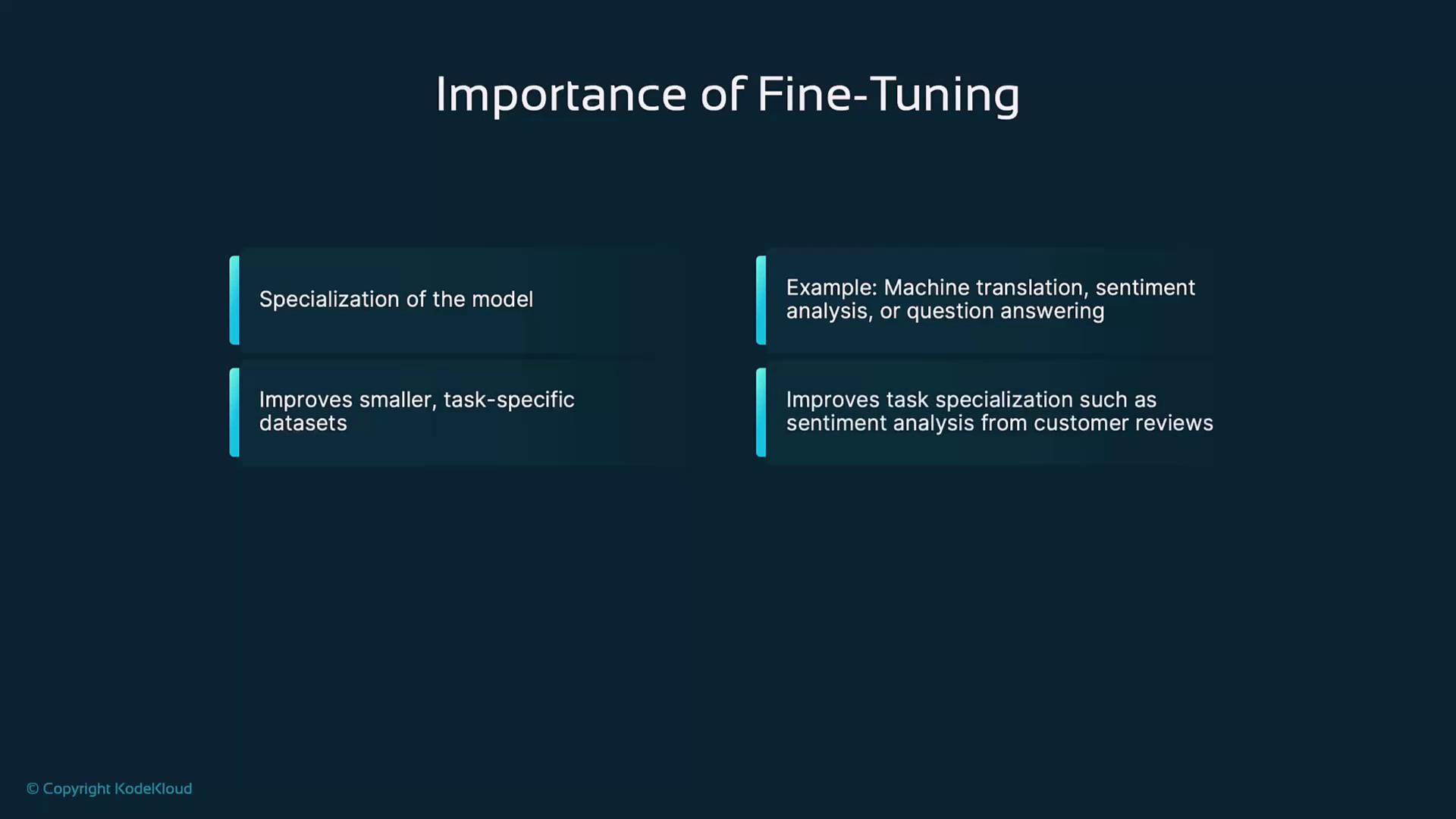
In the fine-tuning stage, you feed the model task-specific inputs and labels to steer its predictions.
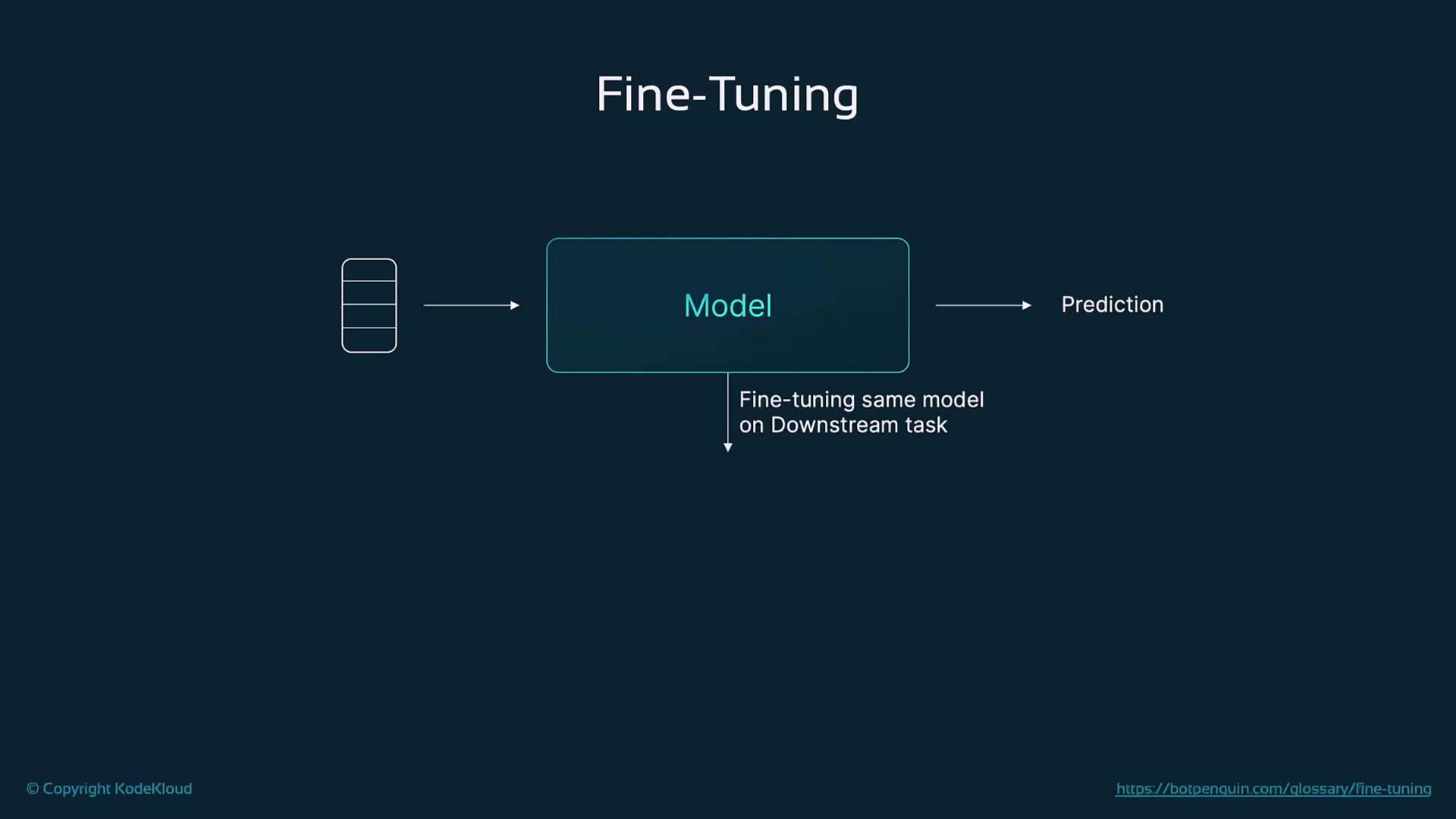
Note
Fine-tuning adjusts only the existing weights rather than learning new ones from scratch, making it computationally more efficient than full-scale pre-training.
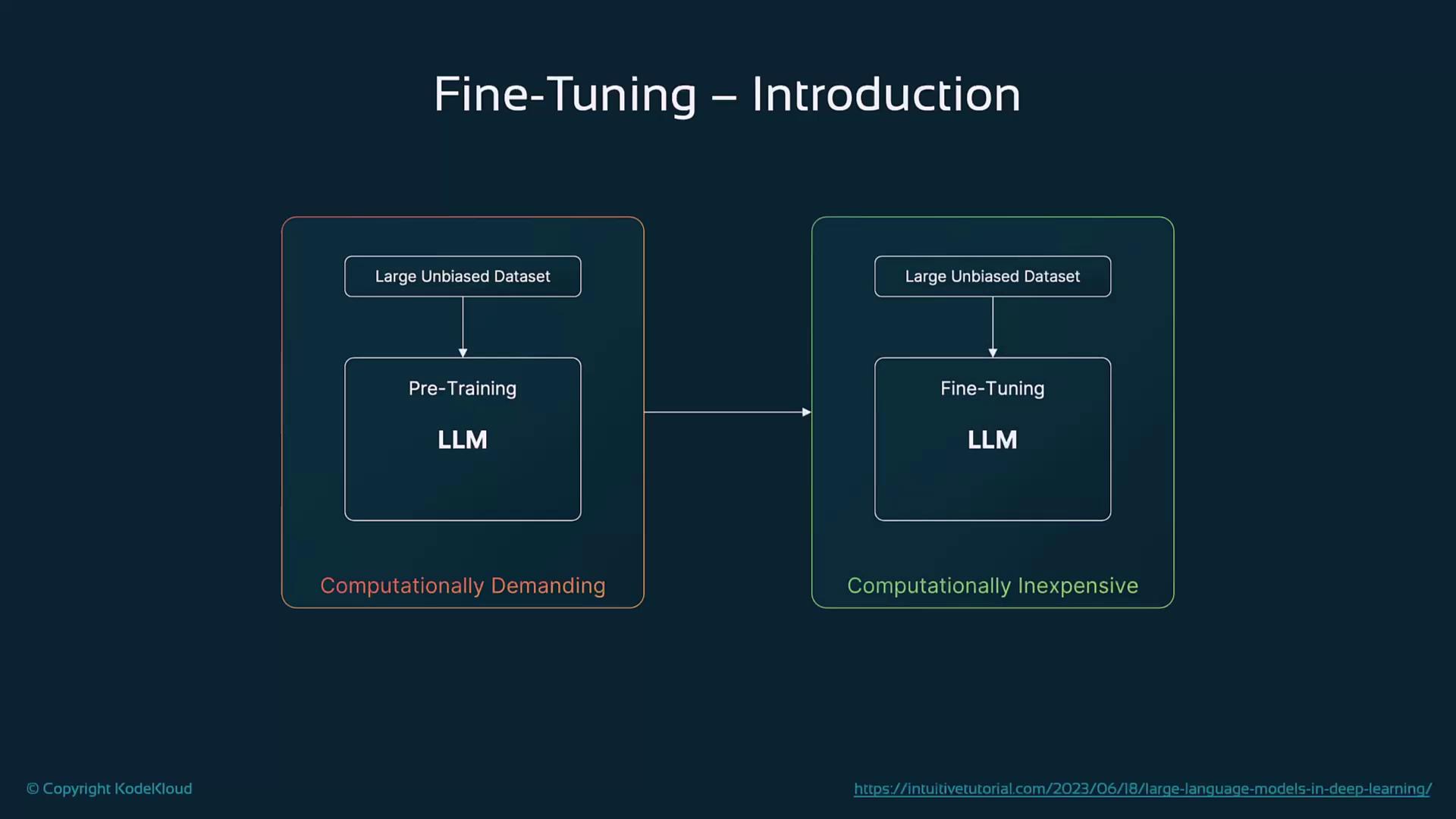
Fine-Tuning Process
- Task-Specific Data: Assemble a labeled dataset (e.g., reviews labeled positive/negative, parallel sentences for translation).
- Supervised Learning: Train on input–label pairs to minimize task-specific loss.
- Weight Updates: Gradually adapt the pre-trained parameters to improve performance on the new task.
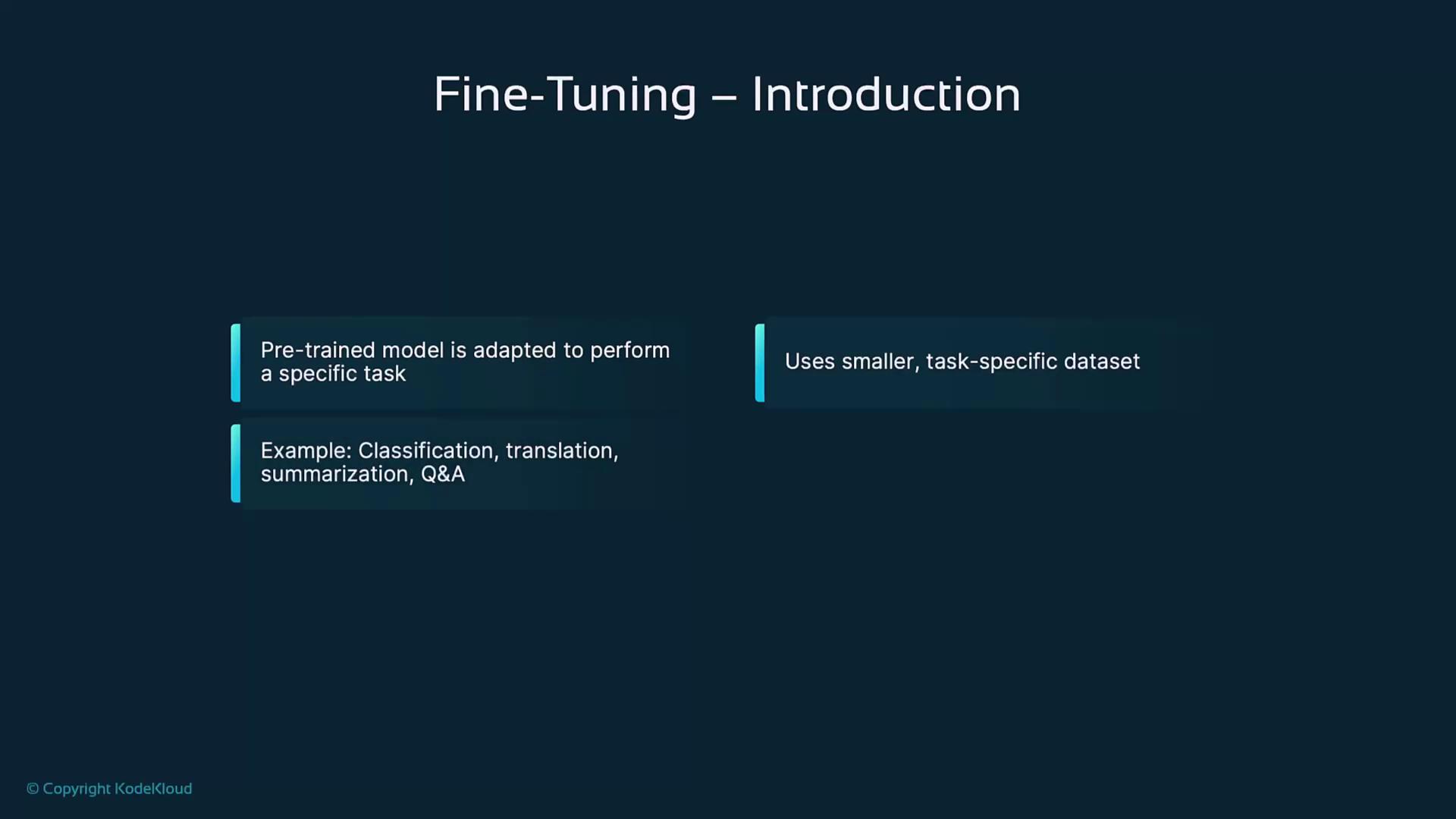
Pre-Training and Fine-Tuning Workflow
A typical LLM development pipeline consists of three stages:
- Pre-Training
- Data: massive text corpora (books, research papers, web content)
- Objective: unsupervised (next-word or masked-token prediction)
- Fine-Tuning
- Data: smaller, labeled datasets for specific tasks
- Objective: supervised learning to adjust model weights
- Evaluation
- Metric: performance on held-out test sets (accuracy, F1-score, BLEU, etc.)
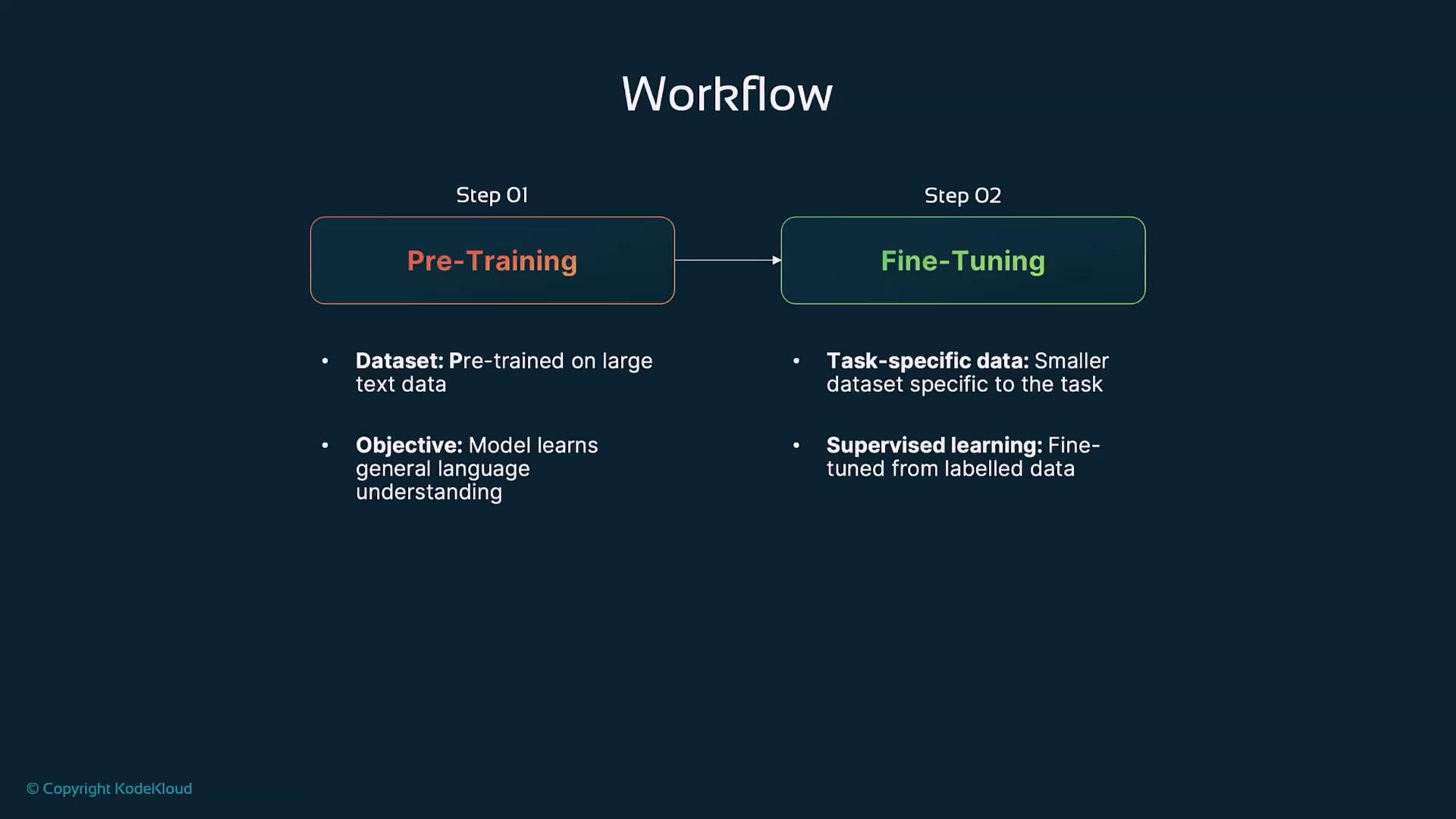
Real-World Examples
- GPT family (e.g., GPT-4): Pre-trained on web-scale corpora, then fine-tuned for chatbots, code generation, and creative writing.
- BERT: Pre-trained with masked language modeling and next-sentence prediction; fine-tuned on SQuAD for question answering and on sentiment corpora for classification.
Success Factors and Challenges
LLMs owe their success to:
- Scalability: training on vast amounts of unlabeled data
- Flexibility: adapting to multiple tasks without full retraining
- Efficiency: lower compute and data needs for downstream tasks
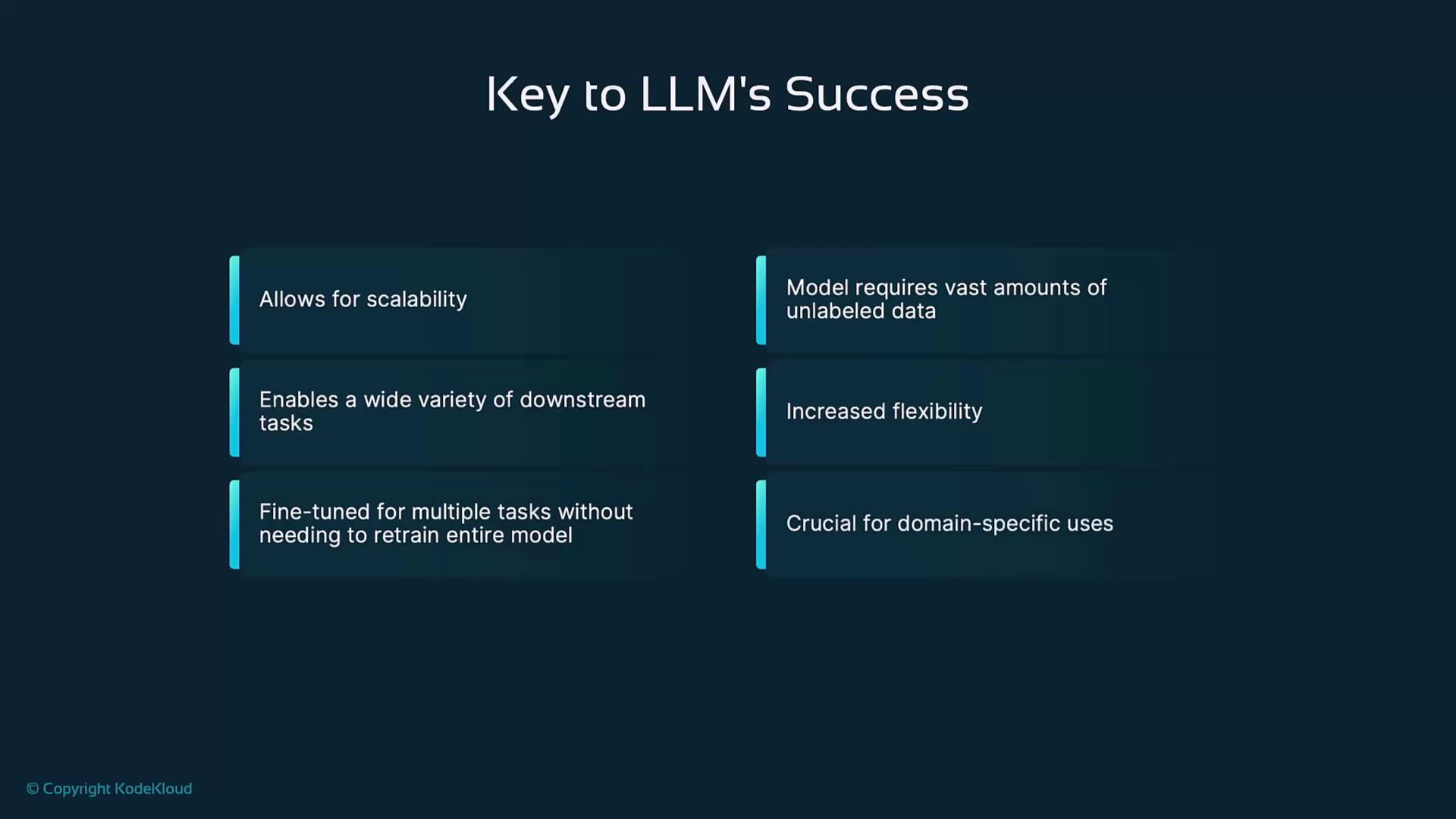
Challenges to address:
- Computational Cost: Pre-training and fine-tuning require significant GPU/TPU resources.
- Data Bias: Models can inherit and amplify biases in training data; mitigation strategies are essential.
Warning
Biases in training datasets can lead to unfair or harmful model outputs. Always evaluate and mitigate bias when fine-tuning.
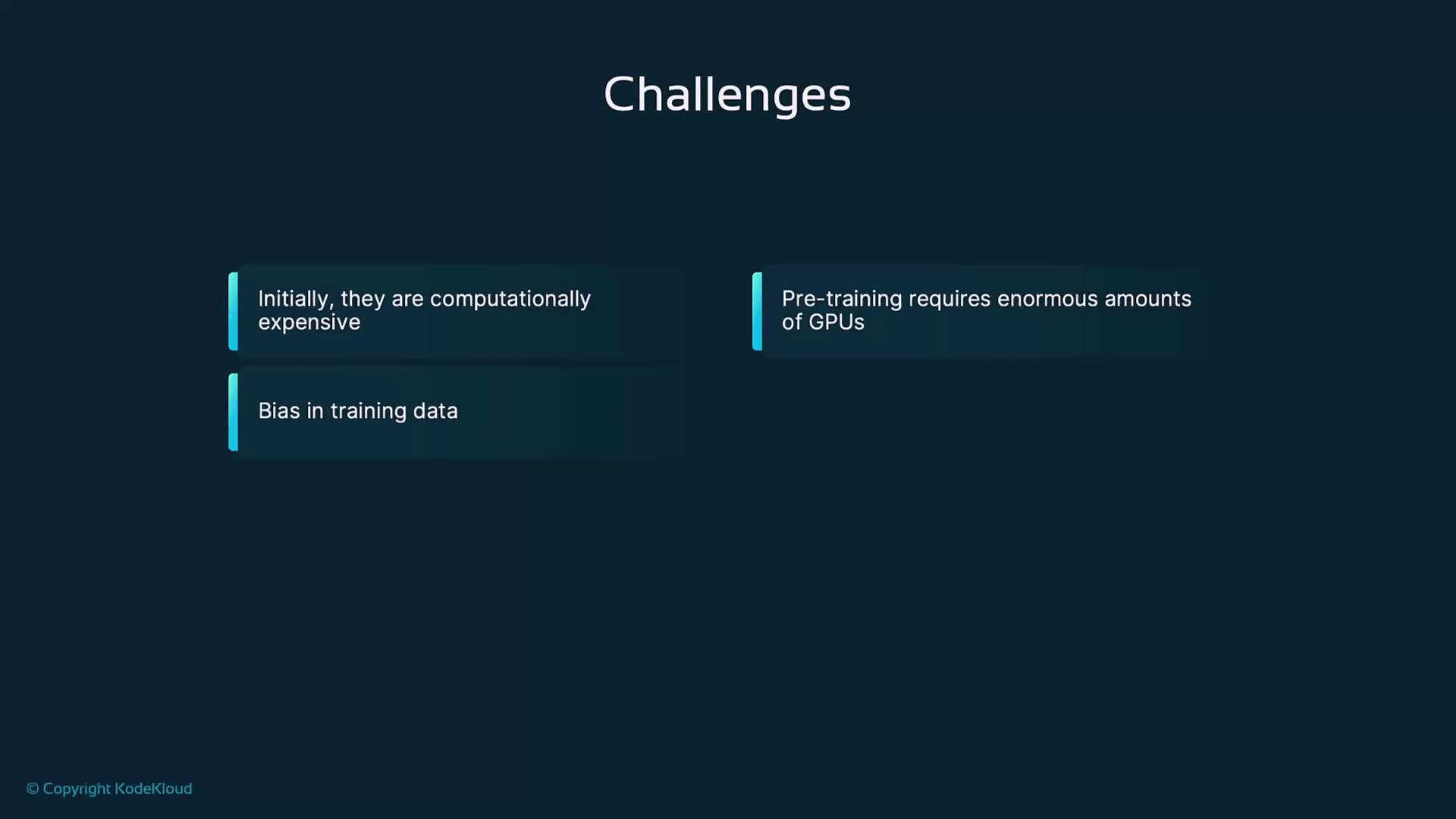
Watch Video
Watch video content